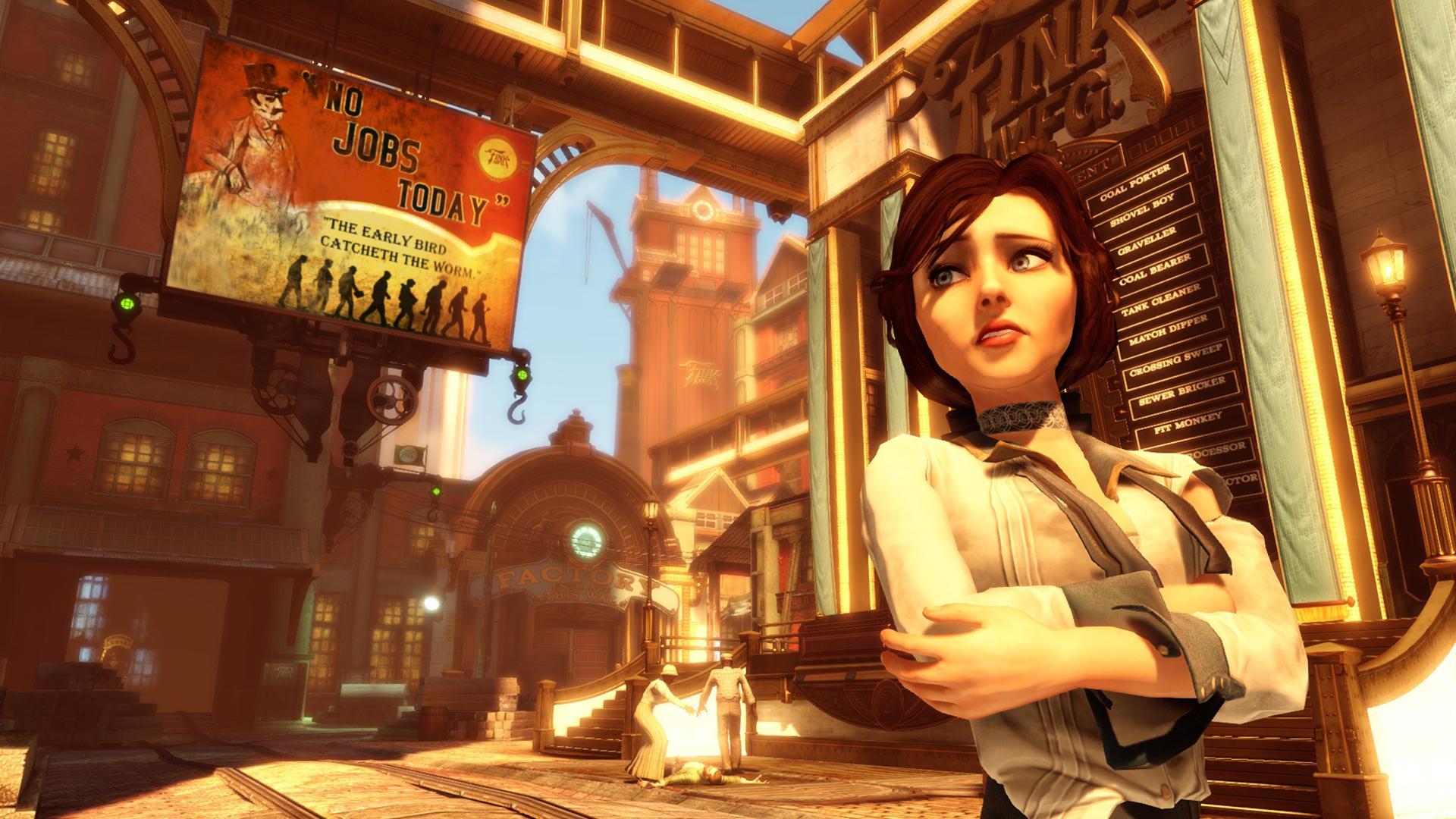In 2007, the game “Bioshock” was released and defied what gamers had come to expect from a first-person shooter, changing the face of console gaming forever.
The game is a dark, disturbing story set in an alternate reality 1960, where an Ayn Rand enthusiast named Andrew Ryan built an underwater city called Rapture. Rapture was planned as a utopian society of advanced humans who alter their DNA with a substance called ADAM, which grants them superpowers. But ADAM slowly turned Rapture’s inhabitants into insane, deformed addicts who overran the city.
The game’s dark dystopian storyline and morality-based decision engine, which change the game based on the player’s choices, was innovative for the time and cemented the game as a classic.
On Tuesday, a spiritual successor to “Bioshock,” “Bioshock Infinite” was released. The game has almost no connection to the storyline of the original, but it still manages to capture the feeling of wonder and fear of the original in different and surprising ways.
“Bioshock: Infinite” takes place in 1912 in the floating city of Columbia, a collection of islands that hover above the clouds suspended on blimps and airships. You play as Booker DeWitt, a Pinkerton Agent who is trying to repay an unknown debt by infiltrating Columbia and kidnapping a young woman named Elizabeth who is imprisoned in a giant statue.
Upon reaching Columbia, the differences between this dystopia and the original Bioshock’s Rapture become immediately clear. While Rapture was a destroyed and abandoned underwater example of a society gone bad, Columbia is a bright and beautiful floating haven. It’s hard not to stare with your mouth agape at the screen as you wander around the city looking at the magnificent floating buildings and lively townspeople walk the streets singing and dancing. The sound design and graphics are so jawdroppingly-gorgeous, you’ll most likely spend half an hour just travelling around observing the environment before you even begin the first segment of the game.
While Rapture’s creepiness is visible instantly upon entering the city, the disturbing nature of Columbia is not as immediately visible. As you wander through the city for the first time, you start to notice a concerning lack of diversity amongst the population. Columbia was founded as an example of American exceptionalism in the early 1900s, which was meant to float across the world as a shining example of American superiority over other nations.
However, something went wrong along the way, and the city’s people began to worship the Founding Fathers as gods, forcing their opinion on the people below them and striving to create a perfect American society free of all foreigners. This disturbing vision of white supremacy is seen on the racially insensitive propaganda strewn across the walls and streets of the city.
Elizabeth’s connection to this warped dystopia is the mystery of the game. Clearly she has some kind of superpowers, the most notable of which is the ability to literally tear the fabric of time and space at will, which is what presumably got her locked up in the tower in the first place.
The gameplay is similar to the original “Bioshock,” implementing both magical powers and first-person shooting segments. The player consumes magical potions called “vigors,” which give DeWitt the powers to throw fireballs, possess machinery and even send a murderous swarm of crows upon his enemies. The juxtaposition of brutal violence in such a warm and sunny environment is almost more disturbing than the original Bioshock’s dark shadowy hallways.
Another incredible addition to the gameplay is DeWitt’s ability to latch onto “Skylines,” magnetic rails that connect the floating cities of Columbia to each other. This is both exhilarating and terrifying, as one wrong move will send you plummeting into the abyss below. Enemies can also use these paths, and often you will have to shoot down foes while hanging on for dear life.
The massively addicting gameplay of the “Bioshock” universe is still here, but the most praise should be given to the story, which is told through exploration and adventure rather than endless cutscenes. Backstory can be learned by listening to recordings and just looking around at what Columbia has to offer.
The programming on Elizabeth as your companion throughout the game is phenomenal. She is both a fully fleshed-out and loveable character, and a fully functioning partner in crime. She picks locks, throws items to you and at times can use her powers to pull objects out of rips in the universe or attack enemies. Asking her to use her powers harms her, however, and the morality choices in the game mostly involve how much you want to put her through. She is so well written and voice-acted that it’s hard not to fall in love with her, which makes the tough decisions harder than ever before.
“Bioshock: Infinite” is unquestionably the best game of 2013 and will most likely go down as one of the biggest achievements of this console generation. Not since the first “Bioshock” have game developers been able to create a world that you can truly get lost in, and this one has improved on its predecessor in almost every way.




